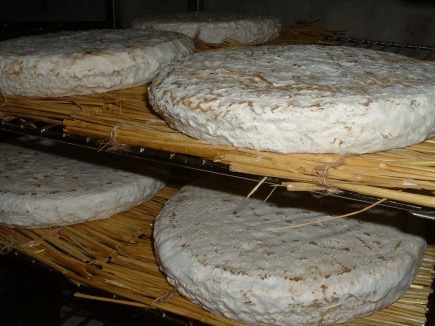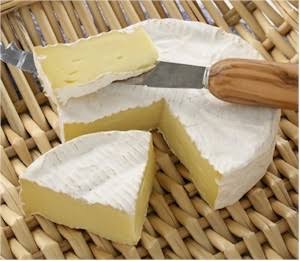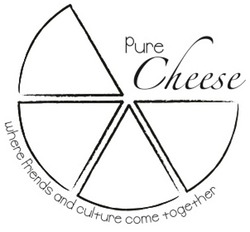As a Cheesemaker, this is a question I get asked at least once a week. The short answer is, in Australia, there’s “bugger all" difference, but here’s a little bit of history.

Brie originated in the 700’s AD, in the “Brie” region, just east of Paris. Brie is made in large, flat wheels, typically 2-3kg. It’s matured on wooden boards lined with straw matts, as it matures it develops yellow moulds with a touch of reddish brown, giving it the rich flavour of wild mushroom soup.
Camembert: A few hundred km to the west, around the time of the French revolution, a traveling clergyman from Brie, took shelter in the farming village of Camembert. Having often talked to his parishioners while they made their cheeses, he was able to repay Marie Harel’s hospitality by sharing his cheesemaking knowledge. Using her existing milk and tools the new form of cheese was born in the village of Camembert. In 1855 one of Marie Harel’s daughters presented Napoleon with one of the cheeses and told him that it came from “Camembert”, the name stuck. Camembert is much smaller than Brie, and has a whiter rind, voluptuous texture, and a slightly yeasty, almost meaty taste.
As a general rule to thumb, Australian Brie is creamier whereas Camembert will have a more complex flavour.

Here in Australia, we don’t have such long traditions and regulations. We have freedom to make many variations of soft cheese (large, small, square, love heart shaped, flavoured, extra creamy etc), and it’s up to individual brands to name their cheese as they wish. In Australian cheese judging shows, Brie and Camembert are both in the same class “White Moulded Cheese”.
Officially there is no difference, and it’s more about marketing than anything else.
As a general rule to thumb, Australian Brie is creamier whereas Camembert will have a more complex flavour, but officially there is no difference, and it’s more about marketing than anything else.
